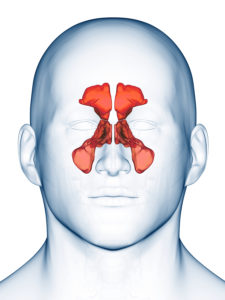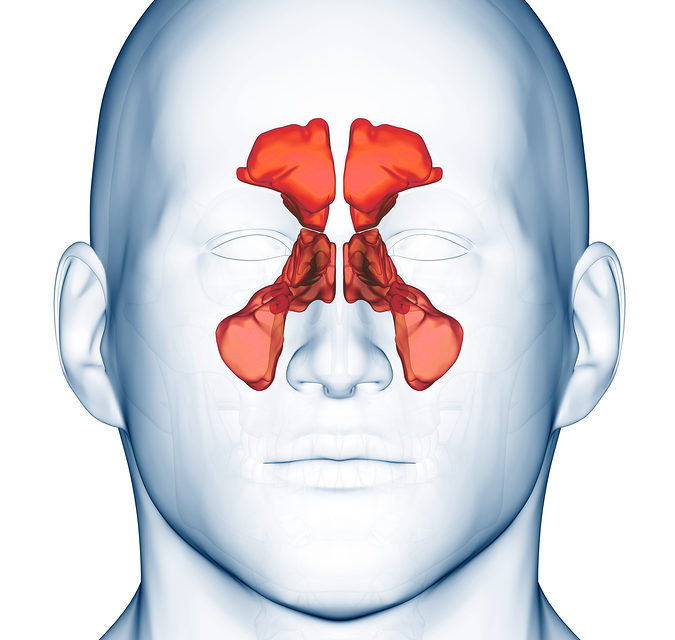 About 34 million Americans suffer with sinus problems. The sinuses are a connected system of hollow cavities in the skull. The largest sinus cavities are about an inch across. They’re lined with soft, pink tissue called mucosa. They are connected to the outside by narrow (about the width of a pencil lead) tubes, called ostea. The ostea are also lined by mucosa
About 34 million Americans suffer with sinus problems. The sinuses are a connected system of hollow cavities in the skull. The largest sinus cavities are about an inch across. They’re lined with soft, pink tissue called mucosa. They are connected to the outside by narrow (about the width of a pencil lead) tubes, called ostea. The ostea are also lined by mucosa
Often the mucosa becomes inflamed due to pollution, allergies, smoking or even the common cold. When the mucosa lining the ostea becomes inflammed, it can prevent the sinuses from draining properly. The moist, warm, mucus-packed sinus becomes a breeding ground for bacteria. To the patient, it seems to be a cold that just doesn’t go away. Chronic sinusitis produces pressure between the eyes, on the sides of the nose, or in the front of the forehead. There is a stuffy feeling, and the victim frequently has headaches. He or she often has a runny nose, sore throat, and/or a cough from the constant draining of mucus.
One thing that may tip you off to the possibility that you have a sinus problem is that you will have several “colds” in a row. You may get sick a lot. What you are really experiencing is a single infection that never really clears up. Another sign is a “tickle” in the back of the throat that causes a non-productive cough.
Because of the repeat bouts of infection the patient may take antibiotics on a regular basis. This can create digestive problems or immune system problems. Repeated courses of antibiotic therapy can create dysbiosis (overgrowth of yeast or other pathologic microorganism in the intestine) and ultimately lead to other problems like headaches, fatigue, digestive problems and allergies. A study published in the journal Pediatrics (April 2001;107:619-625) also found that antibiotic therapy did no better than the placebo in preventing the recurrence of sinus symptoms.
Research published in Archives of Internal Medicine (2003;163:1832-1836.) and performed by scientists at Georgetown University Medical Center, shows a link between fatigue, unexplained pain and chronic sinusitis. More than 20% of the subjects in the study met the criteria for a diagnosis of chronic fatigue syndrome. Most of the chronic fatigue syndrome patients had sinus symptoms. Many noted a sudden onset of their illness, something they have in common with patients suffering with sinusitis.
Antibiotics are often given; sometimes they do not help very much. In the Archives of Environmental Health (July 2003;58(7):433-441), a study looked at the sinus lining in 639 patients diagnosed with chronic sinusitis. It found that many of the cases were due to a high fungal load in the air and in the sinus lining. Reducing air exposure to fungus and saline irrigation improved the health of the sinus lining. The author believes that sinusitis due to allergies or fungal sensitivity may be due to a genetic defect. Other research in appearing in Family Practice News (April 1, 1992;30) stated that allergic sinusitis can be caused by several species of fungus and recommended culturing the mucus to identify the exact fungus involved. Of the 40 subjects in the study, half had a history of allergies or asthma.
Sometime taking antifungal (like an emulsified oil of oregano) and a probiotic is helpful. Use a nasal spray that contains saline. Have them remove the top and add 20 drops of liquid iodine (nutrient iodine—not an antiseptic) and a drop of glycerin (purchased in the make-up department of the local drug store). This will make an effective spray to unblock the ostea and open up the sinuses. The iodine helps to thin secretions (including mucus). If you can determine that there is a deficiency, the patient can take iodine or kelp supplements—that too will help to thin the secretions. Steam, of course is also very helpful. Frequently giving up gluten and dairy will make the treatment more effective. Of course, discuss these ideas with your doctor and do not treat yourself.






